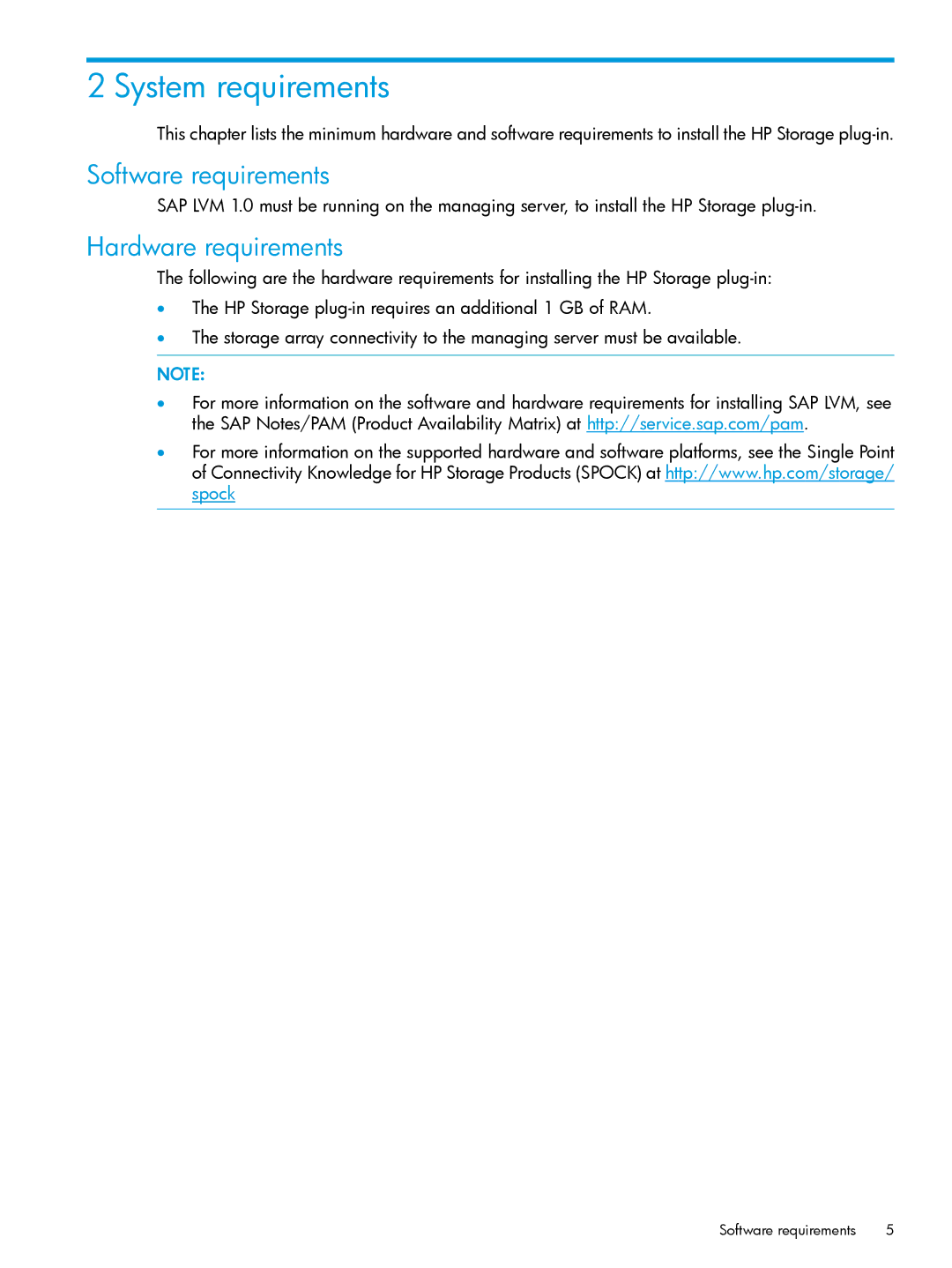Plug-in for SAP NetWeaver Landscape Virtualization Management for Storage specifications
HP Plug-in for SAP NetWeaver Landscape Virtualization Management (LVVM) for Storage is a powerful tool designed to enhance storage management and virtual resource allocation within SAP environments. This specialized integration allows organizations to streamline their storage provisioning and manage their IT landscape more effectively.One of the main features of the HP Plug-in is its ability to automate storage provisioning. By leveraging the capabilities of SAP LVVM, IT administrators can quickly allocate and deallocate storage resources based on SAP system needs. This automation minimizes manual intervention, reduces the risk of errors, and ensures that storage resources are used efficiently.
Another significant characteristic of the HP Plug-in is its real-time monitoring capabilities. The system provides comprehensive visibility into storage usage and performance. Administrators can track metrics such as I/O rates, latency, and storage capacity across various SAP applications. This insight enables proactive management, allowing organizations to anticipate potential issues before they impact performance.
The HP Plug-in also supports various storage technologies, including traditional block storage, Network File System (NFS), and storage area networks (SAN). This versatility ensures that the solution can integrate seamlessly with existing infrastructure, regardless of the underlying storage technology. Furthermore, the plug-in is designed to work with HP's storage products, ensuring optimized performance and reliability.
Moreover, the HP Plug-in features advanced policy management capabilities. Administrators can create tailored storage policies based on specific workloads and applications within their SAP landscape. These policies can dictate replication, backup mechanisms, and performance levels, ensuring that critical business applications receive the necessary resources while optimizing overall storage costs.
Security is another key aspect of the HP Plug-in. With robust access controls and data encryption, organizations can safeguard sensitive information stored within their SAP landscapes. This focus on security is essential in today’s data-sensitive environment, where compliance and data integrity are paramount.
In conclusion, the HP Plug-in for SAP NetWeaver Landscape Virtualization Management for Storage is an essential tool for organizations looking to optimize their storage management within SAP environments. With its automated provisioning, real-time monitoring, policy management, and security features, this plug-in provides a comprehensive solution that enhances operational efficiency, reduces costs, and ensures robust performance in complex IT landscapes. As businesses continue to embrace digital transformation, such tools will play a crucial role in meeting the evolving demands of their SAP environments.

